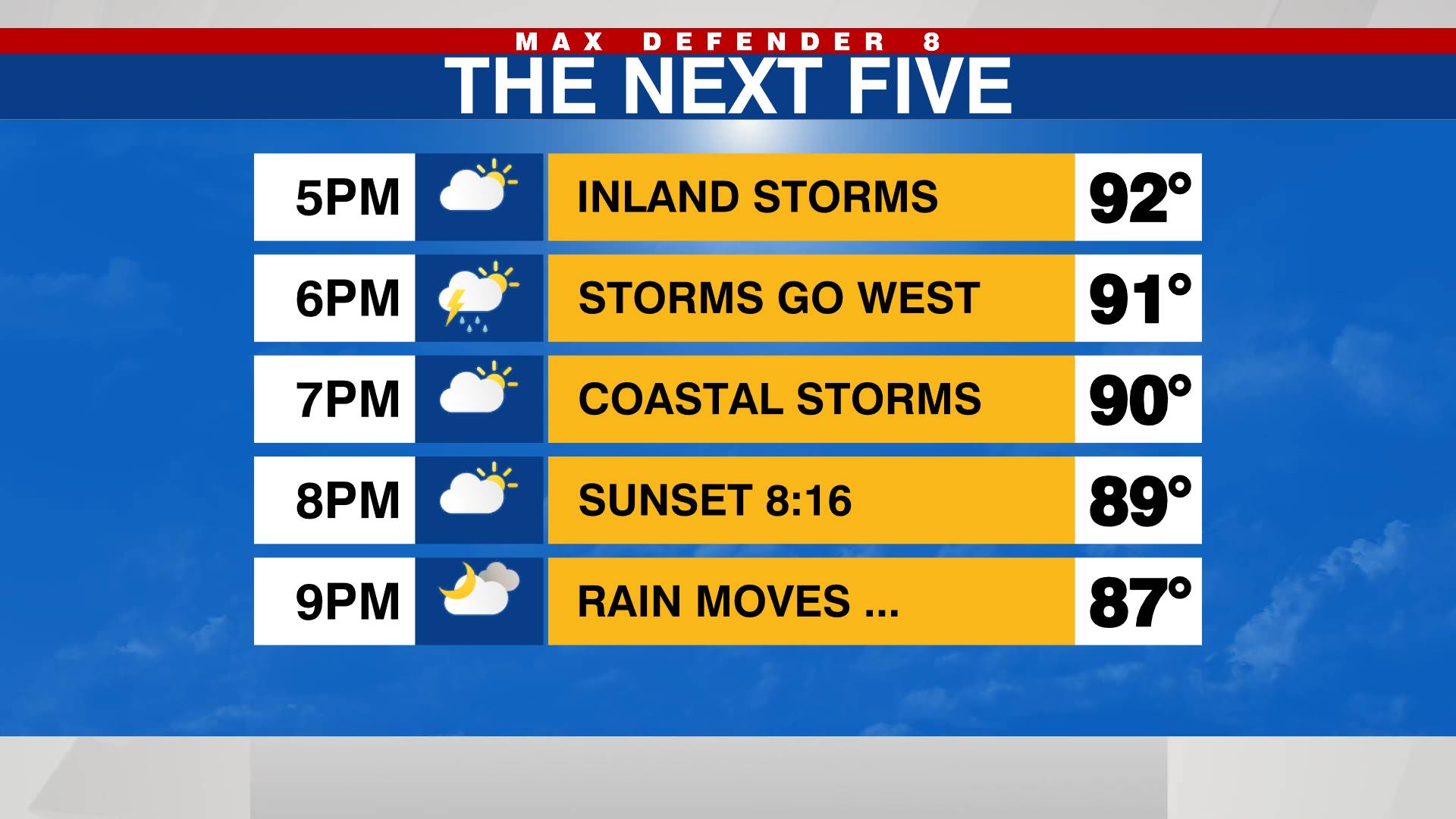Jeff Berardelli is WFLA’s Chief Meteorologist and Climate Specialist
When a hurricane makes landfall we expect the typical impacts – damaging storm surge, destructive winds, and flooding rains. But Helene was different. It shocked and surprised people – from the Gulf Coast to the Blue Ridge Mountains – in ways most did not expect.
And although both the forecasts and the dire warnings were precise, until we experienced and watched the impacts with our own eyes, it was simply impossible to imagine what would unfold.
Along Florida’s Gulf Coast – despite the storm’s eye moving 100 miles west of St Petersburg – Helene forced the highest surge in over 100 years across the beaches and bays – inundating tens of thousands of homes with several feet of water – rendering many of the structures irreparable.
In Western North Carolina Helene produced biblical flooding – arguably the worst in modern US history – wiping out and cutting off whole towns with torrential rain and landslides.
In Georgia, rain, wind and power outages clobbered inland popultions not used to feeling the full force of coastal hurricanes.
What all three of these regions have in common is the atypical way in which this storm behaved. So let’s discuss all three of these aspects, starting with the storm surge.
Storm Surge
All up and down Florida’s West Coast, Helene’s surge overformed hurricanes of similair magnitude and distance from the coast. Tampa Bay Area saw around 7 feet of surge (on top of high tide), the highest since the direct hit of Tampa’s major Hurricane strike of 1921 – about 2.5 feet higher than Idalia the year before. The Nature coast had even more – perhaps as much as 9 feet.
This extraordinary surge was very well forecast by meteorologists at the National Hurricane Center and here at WFLA. That’s because of the very large size Helene – with tropical storm force winds 400+ miles across – with only 4 named storms since 2000 in the Gulf matching the size of Helene.
Larger storms generate more power. In the below tweet you can see a metric called integrated kinetic energy (IKE) which is a fancy way of measuring total power. Helene had twice the power of Idalia and significantly more than even Ian! And thus it had the ability to force higher surge further away from it’s center.
Torrential Inland Rain and Biblical Flooding
Another unsual aspect of Helene was it’s fast forward motion at landfall. Helene was traveling at 24 mph when it made landfall, faster than most storms at this latitude. This, combined with that fact that Helene was intensifying almost right up to landfall, meant that the storm was able to carry it’s momentum and moisture far inland.
But the stage was set for Helene’s disastrous inland rain flooding long before the storm made landfall. That’s because it had been raining heavy in the mountains two days prior in something we call a predecessor rain event.
Predecessor rain events are very common in storms moving northward near/ along the US East Coast. In the case of Helene a tropical plume of moisture set up in the mid and upper levels days ahead of the storm as an elongated jet stream dove to the south, drawing Gulf moisture and Helene northward like a magnet.
At the surface, winds ahead of Helene were from a moist southeast direction, directing Atlantic moisture into the higher terrain of western North Carolina and eastern Tennessee. As the moisture climbs up hill it is forced out of the clouds like a sponge. We call this orographic uplift and it spikes rainfall rates.
After a foot of rain in spots, pre-saturating the ground, Helene then slammed into the mountains, releasing a torrent of rain. The higher terrain effectively rings the storm out like a sponge. As much as 3 feet of rain fell in spots overwhelming everything. The graphic in the tweet explains how the flooding evolved.
Adding insult to injury, the Gulf of Mexico was record hot, around 3 degrees Fahrenheit above normal. And the baseline air temperature is also around 3 degrees warmer than it was before global warming. The hotter water and hotter air fuels a more intense storm with more moisture and more intense rainfall rates.
We saw this at play with Hurricane Helene. It shattered the record for the highest amount of water vaport transport into the region – from the record hot Gulf – since records have been kept in 1940.
In fact, a study released Monday by the world’s top climate scientist in this discipline, Dr Michael Wehner, found that climate change increased Helene’s rainfall by 50% in some locations. That means a storm in 1900 that produced 20 inches, can produce 30 inches today! In this way climate change transforms an already severe flood into a catastrophic one.
While the destruction in the southern Appalachians was and still is unimagineable, it was very well forecast and warned days prior. Here’s an example of a National Weather Service statement expressing the grave urgency on the unusual life-threatening nature of the storm’s impact on that area.
It should be noted that Helene is not the first tropical storm to bring disastrous flooding to the Appalachians. Some of the nation’s most memorable floods happened in a similar fashion.
Inland Damage in Georgia
While the damage in central Georgia was not as severe as locations like Asheville, NC, the system still took many folks by surprise due to how damaging it was so far inland.
Helene, unlike most hurricanes, stayed a hurricane 200 miles from the coast due to its fast speed and intense strength, allowing it to transport its damaging wind and rain further inland. As a result millions of homes suffered damage, trees snappped in half, and extensive power outages caught people off guard.
In fact, take a look at NASA’s before and after nightime satellite images which illustrate the lack of power after Helene.
As a long time TV meteorologist in Florida, what strikes me is that the meteorological community did infact expect Helene to deliver this catastrophic impact BUT even with that knowledge, nothing could have prepared the public, including us forecasters, for the reality.
Even understanding the effects the storm was about to unleash, my mind simply could not picture the scenes that would unravel before our eyes these past few days. Helene was in some ways the perfect storm and a most unimaginable disaster.















